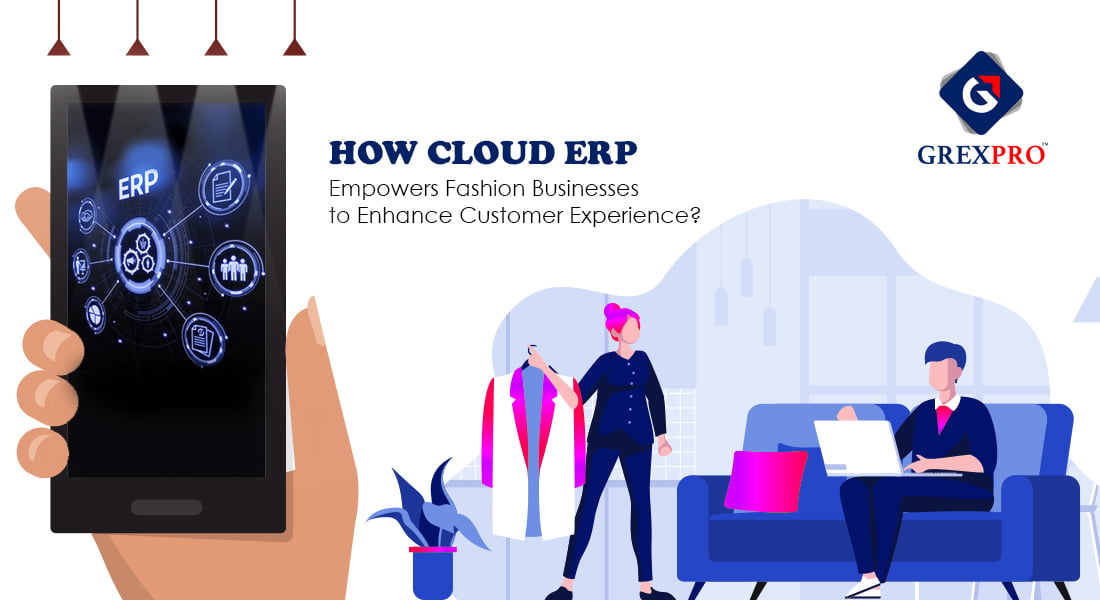
Fashion brands and retailers are under enormous pressure to provide better shopping experiences while garnering more revenue. These scenarios offer tremendous opportunities for technology platforms to improve the customer journey efficiently while balancing their profits. Yet, many fashion houses are scratching their heads at where they should begin and what their approach should be.
Indeed, much of what leads to enhanced customer experience in an apparel or footwear business generally occurs on the retail side. A beautiful window displaying wonderful and beautifully crafted products in a brick-and-mortar store or a well-designed front-end eCommerce site with ample phone or email support is always the centre of attention among buyers. However, what happens on the front end of any business depends heavily upon what is happening at the back end. This is where Enterprise Resource Planning (ERP) comes into the picture to streamline all the processes and boost customer experience.
Here are ways ERP systems help fashion businesses to enhance customer experience:
Simplifies Processes
In the digital era, businesses are expanding their reach and increasing their customer base, and therefore, they need to implement omnichannel marketing strategies. Since the customer base is no longer local or even national, fashion brands and retailers always have to be on their toes when someone from overseas wants to purchase the product. Businesses can easily meet these demands if they have an ERP software features in their business model. Its services and benefits go beyond streamlining warehouses and inventory management to help companies ship orders promptly. The modern ERP solutions help businesses manage multiple currencies, shipping rates, and tariff costs across nations. With eCommerce site integration and customer portals, the modern solutions enable even the international customers to track their shipments and timely inform them about the delivery of their packages.
Caters to Personalized Customers’ Demands
Gone are the days of businesses relying on spreadsheets and pen and paper to manage production, garment sourcing, and inventory; modifying a style is complicated and labour-intensive. However, apparel and footwear companies face a problem when the orders are not placed due to size or color limitations, leading to a loss in sales. Modern best cloud-based ERP software allows your buyers to add sizes and other details without creating a new style. Fashion houses have better opportunities to satisfy their customer’s needs without adding undue complexity.
Moreover, customers are not always ordering according to seasons, and the fashion industry is a time-travelling industry. Age-old trends return cyclically, and spring and summer styles are determined by the previous year’s fall. These scenarios raise issues for fashion houses as they don’t know what and how to prioritize orders when customers are ordering for this season and preordering for the upcoming seasons. This becomes even more complicated when combined with different retail budgets and payment sales, such as the use of factoring, and they have a complex web of orders that need to be fulfilled along with customer satisfaction. Therefore, having a modern ERP tool enables fashion houses to allocate orders efficiently and prioritize their orders, not based on first-come-first-serve. Fashion and footwear labels are better informed about the creditworthiness of the buyer and the speed at which these orders need to be delivered. Allocation allows companies to keep tabs on both finished goods and works in process so that there are no snags in fulfilment. By the time your customers have already placed an order from eCommerce storefront and physical stores, the ERP has already done the work, such as sourcing, costing, and even managing inventory. In many ways, customer experience is directly proportional to ERP solutions’ good quality and capabilities.
Impedes Customer Experience
As discussed above, having a single source for orders, items, inventory, and customer information can help remediate tangled integrations and offer a top-notch customer journey. This unified front-end and back-end help meeting cross channels demands and increase accessibility and visibility of products. The true omnichannel functionality enables shoppers to buy and return anywhere, and personalized marketing and loyalty campaigns build a long-lasting relationship with customers.
In a nutshell, it is impossible for fashion houses to rely on traditional business models and meet customer expectations in the age of digitization. They require a best-in-class digital solution that can disrupt the fashion industry with agility and flexibility. The online ERP software by CloudGrexPro works on similar lines and offers much-needed support to your business, and prepares you for whatever is next. The software intelligently integrates with your selling channels and automates your selling processes, so your customers and you don’t have to log horns over the delivery and ensure a smooth customer journey.
If you are willing to explore a new horizon,